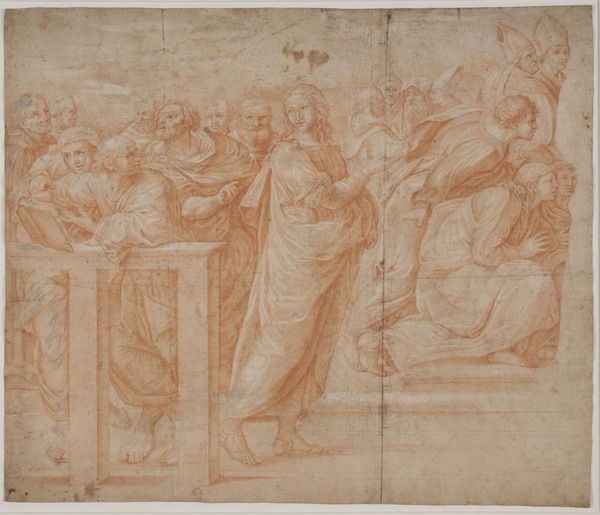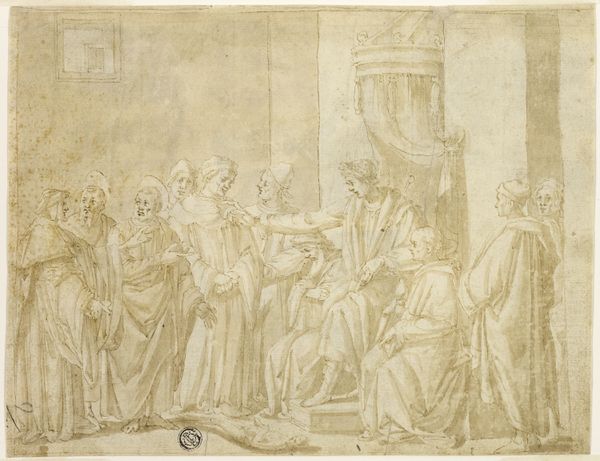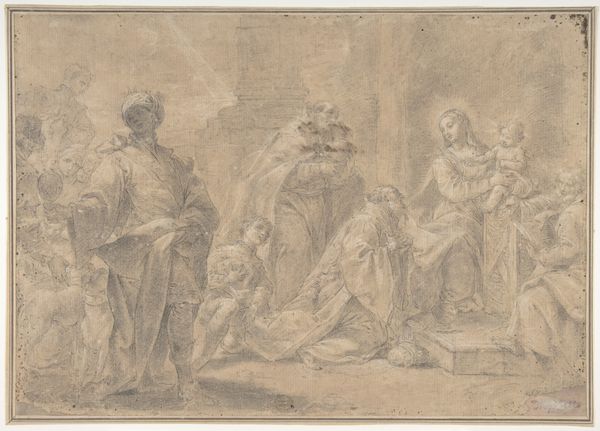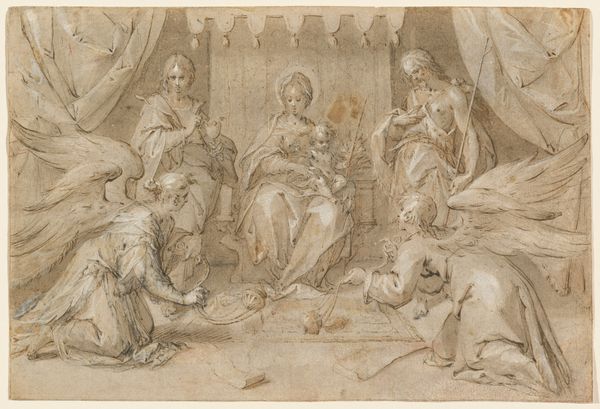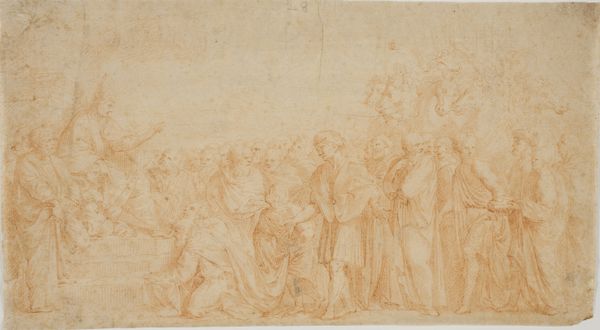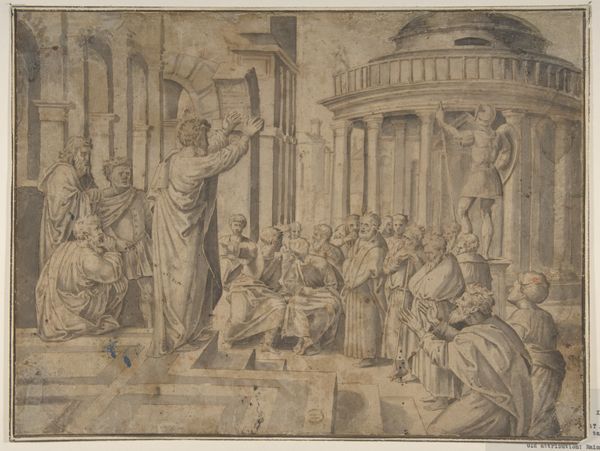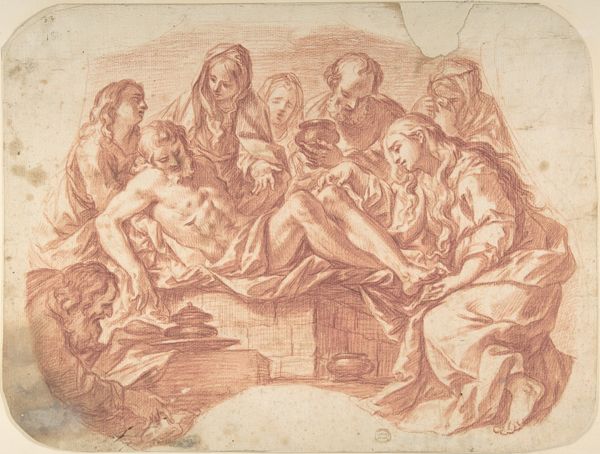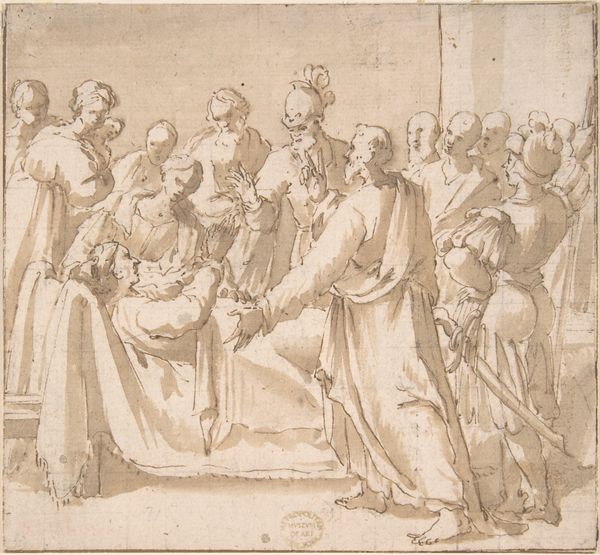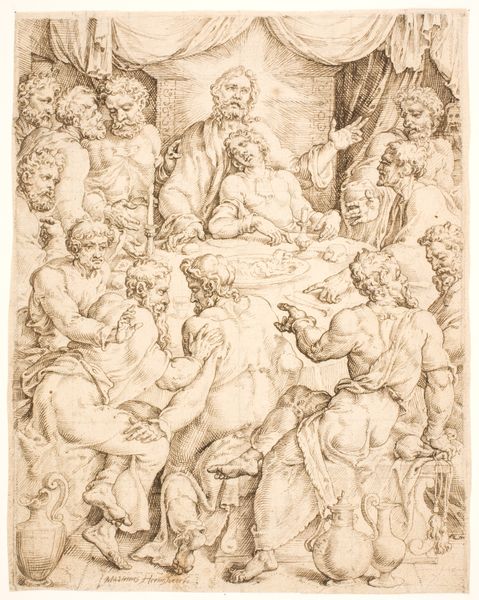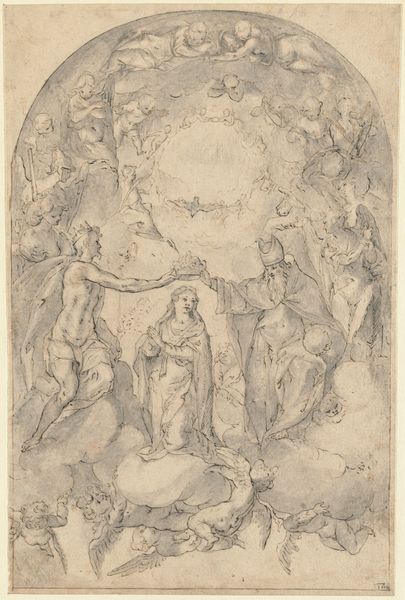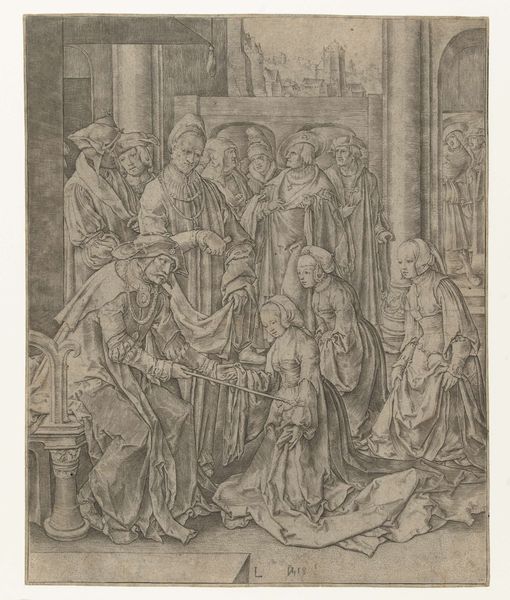
drawing, mixed-media, print, paper, fresco, ink, chalk, pen
#
portrait
#
drawing
#
mixed-media
#
narrative-art
# print
#
charcoal drawing
#
figuration
#
paper
#
fresco
#
11_renaissance
#
ink
#
group-portraits
#
chalk
#
pen
#
history-painting
#
italian-renaissance
#
mixed medium
#
mixed media
#
watercolor
Dimensions: 339 × 372 mm
Copyright: Public Domain
Editor: This is Guido Reni’s "Descent of the Holy Spirit," made after 1607. It’s a mixed media drawing, showcasing the figures gathered in what feels like a moment of intense revelation. What historical narratives do you think this work is trying to tell, or perhaps conceal? Curator: This piece presents a specific, constructed version of the Pentecost, a pivotal moment in Christian history. Reni, working within the Italian Renaissance, engages with power dynamics through a controlled, idealized representation. How does this idealization potentially obscure the lived experiences of the diverse figures who might have been present at the actual event? Consider who is emphasized and who is marginalized in the composition. Editor: I see that Mary is placed centrally, yet all of the figures are men other than her. I wonder, given the time period, how the piece reflected or challenged the role of women, or people of color, in positions of religious leadership. Curator: Exactly. Reni's piece reinforces a patriarchal structure. By placing Mary in a central, yet passive, role, the drawing subtly affirms the existing social hierarchy, relegating women to positions of piety rather than active participation or leadership. It's a reflection of the social codes and cultural expectations of the time, and a poignant example of how art can perpetuate power imbalances. We can interpret Reni’s strategic omissions – where are the people of colour within a narrative that surely extends beyond Europe? – as being incredibly revealing. Editor: It’s fascinating how a single drawing can open up such complex questions about history and representation. I’ll definitely look at Renaissance art with fresh eyes now. Curator: Absolutely. It's crucial to examine how artists like Reni actively shaped historical narratives, often reinforcing dominant ideologies, and to consider the voices and experiences that were deliberately excluded.
Comments
No comments
Be the first to comment and join the conversation on the ultimate creative platform.
